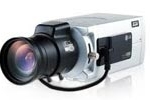A CCTV security system usually comprises of a set of cameras, a recording system, as well as a monitor to view your surveillance footage. When it comes to cameras, you have a broad range of cameras to choose from. The first choice that you should make regards a decision between an analogue and digital CCTV camera. An analogue camera is the older technology, but that doesn’t mean that they can’t do the job for you.
Analogue cameras operate by transforming their audio and video signals into a wave and transcribing this wave onto a tape. While this is a cheaper option it does have the issue of one having to slow down the tapes because of the amount of space the footage takes up. It also means that what is recorded has to be whittled down to 4 frames per second, which means less actual footage. However, there is a solution to this. A video capture card can transform your analogue signals into digital ones, and from here it’s a simple step to store the digital signals on a PC or DVR.
Nowadays digital cameras have become the more popular. This is because they are becoming cheaper, and because of the fact that they are able to perform far more functions than your average analogue camera. Digital cameras are able to send digital signals to a PC or DVR. All this means is that the signal is digitised, in other words the signal has been turned into code which a computer or digital video recorder can recognise.
Because of this, it means that the camera can accept computer input, which means you can program the camera to perform certain functions. This is especially useful when considering the fact that some CCTV systems are online, not only does this mean that you can view your CCTV security systems footage over the internet wherever you are in the world, but you can also send commands to the CCTV cameras over the internet. This is very useful for people who travel, or who are on holiday and want to check whether everything is safe in their home.


